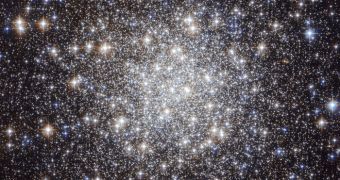Astronomers using the NASA / ESA Hubble Space Telescope recently pointed the iconic observatory towards the constellation Lyra. They image the beautiful, tightly-bound, globular stellar cluster Messier 56 in exquisite detail.
Also known as M56 and NGC 6779, the object is located around 33,000 light-years away, which is very close in astronomical terms. All the stars in this cluster are strongly bound to each other by gravity, the research team says.
Interestingly, when famous astronomer Charles Messier first observed this structure, back in January of 1779, he did not see any of these bright suns. The scientist described M56 as a “nebula without star.”
This pattern is consistent throughout all of his discoveries of globular clusters. This is due to the limitations of the telescope the expert used in making his observations. The instrument simply did not have the necessary resolve power to detect the stars.
Through the eyepiece, Messier say globular clusters are as fuzzy balls, making it impossible to distinguish any individual objects within. With the Hubble, we can now see the inner structures of globular clusters in exquisite detail.
This particular image, covering an area of the night sky of about 3.3-by-3.3 arcminutes, was collected by the Advanced Camera for Surveys (ACS) instrument on the massive telescope. One of the things the ACS is good at is distinguishing between stars in the cluster and similar objects in the foreground.
According to astronomers, this is one of the things that make studying globular clusters very difficult. Objects in this class, including Messier 56, are located in the galactic plane, which means that numerous stars lie between our point of view and our target.
“By comparing high quality observations taken with the Hubble Space Telescope with results from the standard theory of stellar evolution, astronomers can characterize the properties of a cluster,” NASA experts say in a press release.
“In the case of Messier 56, this includes its age, which at 13 billion years is approximately three times the age of the Sun. Furthermore, they have also been able to study the chemical composition of Messier 56,” they conclude.

 14 DAY TRIAL //
14 DAY TRIAL //